Your gateway to endless inspiration
Maps - Blog Posts
Bro but what about when map distortion is taken into consideration
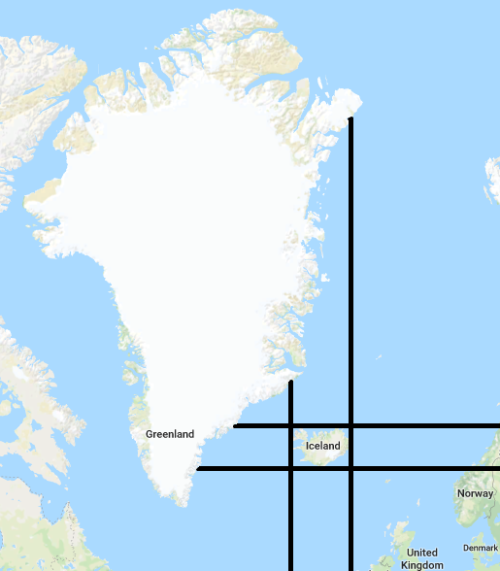
I just sneezed all over my phone
But anyways, MAPs are sick, they need help, it’s kinda funny how they say that WE are the danger and WE need help when they’re fucking pedophiles themselves that get off on minors??? Like sIS WYD
Map: we’re okay if we don’t act on it
Me: you still get off on minors, which means you’re not “okay” you’re still disgusting :)
Map: no u
When people justify/support MAPs, it makes me sick to my stomach. Supporters, enablers, and MAPs themselves need a lot of help. Like seriously stay away from my future children and dO NOT have your own kids, for their personal safety, thank you.





I love drawing pen and paper maps for my D&D campaigns, here’s a bunch of my recent ones








Wanted to motivate myself to do more in my map and patterns sketchbook (I really fell out of doing big maps so I just started putting my ideas here)
Any interesting heraldry/patterns/land formations get logged in here for future reference (also the warp map of Custodia from Blasphemous)

Sean bienvenidos, japonistasarqueólogos, en esta ocasión os expongo una situación en lo que respecta al mundo occidental y oriental, dos caras de una misma moneda, ya sea historia del arte, arqueología, geografía, entre otros temas, vengo a exponer el gran desequilibrio que hay en lo que respecta a estas dos corrientes, dicho esto pónganse cómodos que comencemos. - En la foto de mi mano izquierda podemos ver claramente los países que engloban las corrientes de extremo oriente, que es el tema en particular de la publicación y al margen derecho podemos ver algunos países de occidente, entre otros. Voy a coger las palabras más sabias para explicar este desequilibrio de corrientes, que por desgracia, parece que los occidentalistas están implantando la idea del siglo XIX como que lo occidental es mejor que extremo oriente, ya que oriente al estar en la Cochinchina, pues se le tiene en un rango inferior y no es el caso. Si le preguntamos a la gente de la calle, el 90% de la gente si le preguntaras cosas de dicho tema, lo más probable es que no sepan nada, porque carecen de la ignorancia, pero que no es culpa de ellos, sino de cómo se han enseñado las cosas por parte de los gobiernos de los distintos países occidentales. - Otros puntos que vamos a resumir en este párrafo, serían la gente que lo difunde y fermenta la occidentalización, erradicando la orientalización de extremo oriente normal que la gente que divulgamos cosas, de extremo oriente, no tengamos el apoyo suficiente o solo de una parte. - Espero que os haya gustado, posdata estoy dando mi punto de vista, lo más probable es que haya gente que no lo comparta, otros si y otros se mantengan al margen nos vemos en próximas publicaciones. - ようこそ、日本の考古学者の皆さん、この機会に、私は美術史、考古学、地理など、同じコインの裏表である西洋と東洋の世界に関する状況を紹介します。これら 2 つの流れに関しては、そうは言っても、安心して始めましょう。 - 私の左手の写真には、この出版物の特別なテーマである極東海流を含む国々がはっきりと見え、右側にはいくつかの西洋諸国などが見えます。私はこの流れの不均衡を説明するために最も賢明な言葉を使うつもりだが、残念なことに、西洋主義者たちは、東洋はコーチシナにあるので西洋のほうが極東よりも優れているという19世紀の考えを植え付けているようだ。それは彼をより低いランクに置いているのですが、そうではありません。街行く人々に尋ねると、90%の人が、この話題について尋ねると、ほとんどの場合、彼らは無知なので何も知らないということですが、それは彼らのせいではなく、物事がどうなっているのかということです。さまざまな西側諸国の政府によって教えられてきました。 - この段落で要約するその他の点は、それを広め、西洋化を発酵させ、極東の東洋化を根絶する人々です。極東から物事を広める人々が十分な支持を得ていないのは正常ですまたは片側からのみ。 - 気に入っていただければ幸いです。追記 私は私の見解を述べていますが、おそらくそれを共有しない人もいれば、共有する人もいれば、近づかない人もいるでしょう。今後の出版物でお会いしましょう。 - Welcome, Japanese archaeologists, on this occasion I present to you a situation regarding the Western and Eastern world, two sides of the same coin, be it art history, archeology, geography, among other topics, I come to expose the great imbalance that There is in regards to these two currents, having said that, make yourself comfortable and let's begin. - In the photo on my left hand we can clearly see the countries that encompass the Far Eastern currents, which is the particular topic of the publication, and on the right side we can see some Western countries, among others. I am going to use the wisest words to explain this imbalance of currents, which unfortunately, seems that the Westernists are implanting the idea of the 19th century that the Western is better than the Far East, since the Orient is in Cochinchina, since it is It has him in a lower rank and that is not the case. If we ask people on the street, 90% of the people, if you asked them things about this topic, the most likely thing is that they do not know anything, because they lack ignorance, but that is not their fault, but how things have been taught by the governments of the different Western countries. - Other points that we are going to summarize in this paragraph would be the people who spread it and ferment Westernization, eradicating the orientalization of the Far East, it is normal that the people who spread things, from the Far East, do not have enough support or only from one side. - I hope you liked it, postscript I am giving my point of view, most likely there are people who do not share it, others do and others stay away, see you in future publications.

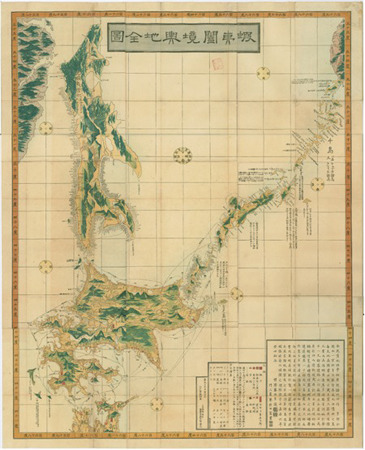



Capítulo 1: Introducción a los Emishi. Sean bienvenidos amantes del mundo japonés a una nueva publicación, en esta ocasión vamos a hablar sobre los emishi dicho esto pónganse cómodos que empezamos. - Para empezar, el término emishi hace referencia a todas las tribus y pueblos que vivían y que todavía viven al norte de Japón es decir la mitad norte de Tohoku, incluida hokkaido a este pueblo se le denominaba y se le denomina todavía a día de hoy Ainu, considerados los primeros pobladores del archipiélago a lo largo del siglo XVI hubo una serie de campañas militares para controlar dicho territorio aunque ya en el siglo VII siglo VIII después de Cristo durante el apogeo del clan yamato crearon una serie de fortalezas al norte para mantenerlos a raya. De hecho eran denominados bárbaros del norte que además se revelarán en más de una ocasión bajo el dominio japonés sin resultado alguno, actualmente se les da un reconocimiento a esta cultura, que en el pasado no lo tuvieron, como por ejemplo hay un museo dedicado a ellos y a su cultura. - Espero que os haya gustado y nos vemos en próximas publicaciones que pasen una buena semana. - 第 1 章: 蝦夷の紹介。 日本世界を愛する皆さん、新しい出版物にようこそ。今回は蝦夷について話します。とはいえ、気を楽にして始めましょう。 - まず、蝦夷という用語は、日本の北、つまり北海道を含む東北の北半分に住んでいた、そして今も住んでいるすべての部族と民族を指し、この民族は現在もアイヌと呼ばれていると考えられています。 16 世紀を通じてこの列島に最初に定住した人々は、その領土を支配するために一連の軍事作戦を行ったが、すでに 7 世紀から 8 世紀にはヤマト氏の全盛期に、彼らは北に一連の要塞を築き、領土を維持していた。湾。実際、彼らは北の野蛮人と呼ばれていましたが、日本の統治下でも何の成果も得られずに何度も姿を現しましたが、現在では、この文化は、例えば、そこでは過去にはなかった認識を与えられています。は彼らとその文化に特化した博物館です。 - 気に入っていただければ幸いです。今後の投稿でお会いしましょう。良い一週間をお過ごしください。 - Chapter 1: Introduction to the Emishi. Welcome lovers of the Japanese world to a new publication, this time we are going to talk about the emishi, that being said, make yourself comfortable and let's get started. - To begin with, the term Emishi refers to all the tribes and peoples who lived and still live in the north of Japan, that is, the northern half of Tohoku, including Hokkaido. This people was called and is still called Ainu today. , considered the first settlers of the archipelago throughout the 16th century there were a series of military campaigns to control said territory although already in the 7th century 8th century AD during the heyday of the Yamato clan they created a series of fortresses to the north to keep them at bay. stripe. In fact, they were called barbarians of the north who also revealed themselves on more than one occasion under Japanese rule without any result. Currently, this culture is given recognition, which in the past they did not have, such as, for example, there is a museum dedicated to them and their culture. - I hope you liked it and see you in future posts, have a good week.
El origen de un país y su prehistoria, un paseo por la historia del país del sol naciente. /国の成り立ちと先史、日出ずる国の歴史を歩く。/The origin of a country and its prehistory, a walk through the history of the country of the rising sun.
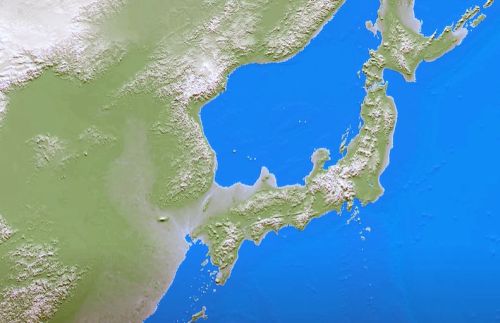

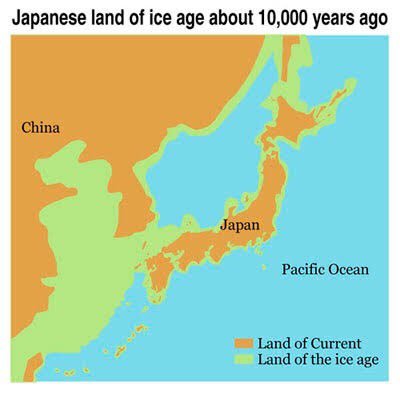

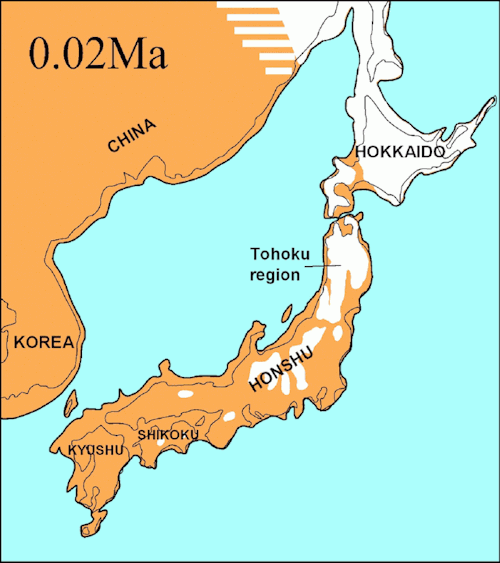

Sean bienvenidos, japonistasarqueológicos, a una nueva entrega de arqueología nipona e historia nipona, una vez dicho esto pónganse cómodos qué empezamos.
-
En los capítulos 1,2,3:Hablamos de: ¿Cuándo llegaron por primera vez los homínidos a Japón? ¿De qué vivían? Hablamos un poco de su geografía, de las cuatro eras glaciales, también se mencionó el holoceno. Empezamos a hablar del pleistoceno, y de cuando empezó la prehistoria de hace 2,5 (esta fecha está desfasada actualmente ronda 4 millones, por los hallazgos de industria lítica) a 7 millones de años. Comentamos algunos homínidos: Homo neanderthalensis, Homo heidelbergensis, homo ergaster entre otros homínidos, comentamos como África es la cuna de la humanidad, y su diversidad de dispersiones migratorias. También se comentó la llegada los homínidos a Okinawa hace 30.000-40.000 años y los Ainus como posibles primeros pobladores. Seguimos hablando del pleistoceno, estuvimos explicando un poco sobre el pleistoceno, se mencionó un poco la formación del archipiélago, mencioné mi posible teoría y al final terminamos con ¿Cómo se llaman las placas tectónicas que forman el archipiélago?
-
Espero que os guste y nos vemos en próximas publicaciones, que pasen una buena semana.
-
日本の考古学者諸君、ようこそ、日本考古学と日本史の新連載へ!さあ、くつろいで、始めよう。
第1章、第2章、第3章では、「ヒト科の動物はいつ日本にやってきたのか?地理、4つの氷河期、完新世についても少し触れました。更新世について話し始め、先史時代が始まった250万年前(この年代は、石器産業の発見により、現在では約400万年古くなっている)から700万年前について話した。ホモ・ネアンデルターレンシス、ホモ・ハイデルベルゲンシス、ホモ・エルガスターなどのホミノイドについて解説し、アフリカが人類発祥の地であること、その移動分散の多様性について述べた。また、3万~4万年前の沖縄へのヒト科動物の到着と、最初の入植者である可能性のあるアイヌ人についても議論した。私たちは更新世について話を続け、列島の形成について少し説明し、私が可能性のある説を述べ、最後にこう締めくくった。 列島を形成しているプレートの名前は?
それではまた、良い一週間を。
-
Welcome, Japanese archaeologists, to a new instalment of Japanese archaeology and Japanese history, so make yourselves comfortable and let's get started.
In chapters 1,2,3:We talk about: When did hominids first arrive in Japan? What did they live on? We talked a little bit about their geography, the four ice ages, the Holocene was also mentioned. We started talking about the Pleistocene, and when prehistory began from 2.5 (this date is now out of date by about 4 million years ago, due to the findings of lithic industry) to 7 million years ago. We commented on some hominids: Homo neanderthalensis, Homo heidelbergensis, homo ergaster among other hominids, we commented on how Africa is the cradle of humanity, and its diversity of migratory dispersions. We also discussed the arrival of hominids in Okinawa 30,000-40,000 years ago and the Ainus as possible first settlers. We continued talking about the Pleistocene, we were explaining a bit about the Pleistocene, the formation of the archipelago was mentioned a bit, I mentioned my possible theory and at the end we finished with What are the names of the tectonic plates that form the archipelago?
I hope you like it and see you in future posts, have a nice week.

Capítulo 1 El origen de un país y su prehistoria, un paseo por la historia del país del sol naciente. Sean bienvenidos, a una nueva serie, de arqueología prehistórica, en esta ocasión, nos trasladamos al país del sol naciente. ¿Cuándo llegaron por primera vez los homínidos a Japón? ¿De qué vivían? Todo y mucho más lo iremos viendo en los próximos capítulos. Dicho esto, pónganse cómodos que empezamos.
-
Antes que nada, un poco de geografía: En este apartado analizaremos la geografía nipona de aquellos entonces. La parte norte del país estaba bajo una gran capa de hielo, además, Japón estaba prácticamente unido, fue a finales del pleistoceno, cuando llegó el holoceno (hace unos 12000 años), previamente, tuvieron lugar cuatro glaciaciones(Günz, Mindel, Riss y Würm las cuales tuvieron lugar en el cuaternario).
-
El holoceno abarca hasta nuestros días, este efecto hace desaparecer a los grandes animales, plantas, etc. ¿Había dinosaurios en el archipiélago antes de la llegada de los humanos?, este punto no nos cunde, pero haré un pequeño resumen, para que se hagan una idea. -
Espero que os esté gustando, en los próximos capítulos hablaremos en profundidad de todo, os deseo un cordial saludo mis queridos fanáticos.
-
Chapter 1 The origin of a country and its prehistory, a walk through the history of the country of the rising sun. Welcome to a new series of prehistoric archeology, on this occasion, we move to the country of the rising sun. When did hominids first arrive in Japan? What did they live on? We will see everything and much more in the next chapters. That being said, get comfortable and let's get started.
-
First of all, a little geography: In this section we will analyze the Japanese geography of those times. The northern part of the country was under a large ice sheet, in addition, Japan was practically united, it was at the end of the Pleistocene, when the Holocene arrived (about 12,000 years ago), previously, four glaciations took place (Günz, Mindel, Riss and Würm which took place in the Quaternary).
-
The Holocene extends to the present day, this effect makes large animals, plants, etc. disappear. Were there dinosaurs in the archipelago before the arrival of humans? This point is not relevant to us, but I will give a brief summary to give you an idea.
-
I hope you are liking it, in the next chapters we will talk in depth about everything, I wish you a cordial greeting my dear fans.
-
第一章 国の成り立ちと先史、日出ずる国の歴史を歩く。 先史考古学の新しいシリーズへようこそ。この機会に、私たちは日出ずる国に移ります。 原人が日本に初めて到来したのはいつですか? 彼らは何を食べて生きていたのでしょうか? 次の章ですべてを見ていきます。 そうは言っても、安心して始めましょう。
-
まず最初に、地理について少し説明します。このセクションでは、当時の日本の地理を分析します。 国の北部は大きな氷床の下にあり、さらに日本は事実上統一されており、完新世が到来した更新世の終わり(約1万2000年前)であり、以前は4回の氷河期が起こっていた(ギュンツ、ギュンツ、第四紀に起こったミンデル、リス、ヴュルム)。 完新世は現在まで続き、この影響により大きな動物や植物などが消滅します。 人類が到来する前、この列島には恐竜がいたのでしょうか? この点は私たちには関係ありませんが、イメージを伝えるために簡単にまとめておきます。
-
気に入っていただければ幸いです。次の章ではすべてについて詳しく説明します。親愛なるファンの皆様に心からのご挨拶を申し上げます。
Is Lilliput being off the coast of wonderland relating to the size discrepancies? “Eat me/Drink me?”
One of my favorite hobbies is thinking about the fucked up implications of this fantasy world map my parents got me for christmas

[Image ID: photo of a map. On the left side of the map is Middle Earth, with the Shire and Mordor labeled. To the direct right of Mordor is Whoville.]

✥ | a map of ru’aun, circa 1416 a.i. (after irene)
—————————————————————————————————————
hi!! it’s me again!! today i bring you a little teaser for my mcd roleplay that’s gonna be coming up either this or next year!!
i’m really excited for it, and the guys in the mcd big bang server have really inspired me to keep on crafting. more updates about this will come soon if you guys are interested in hearing more!!
(under the cut is a little tidbit about roleplay locations)

every city in red is going to be an area/setting you can actually roleplay in!! it’s not concrete, and could change—but this is what i’m thinking. key below <3
circle with diamond — ‘capital’ of the phoenix drop alliance
circle with dot — major cities
circle — minor cities
diamond — settlement/village
animal footprint/marking — high concentration of that region’s nonhuman species
Fan Theory: Like Ogres and Onions, the Matoran Universe has Layers
This theory has been rattling around in my head for some time, I might make a Knowledge Tower video about it someday, but I’m not certain if its a good fit, given its more of a theory than anything where I actually do some science in it. Maybe you all can let me know if this is a good video idea in the notes?
Anyway, the crux of this theory is something to try to explain how all of this:

Actually fits into the body of the GSR.
This is a long post, so I’ll put the rest under the cut.
We already know from Greg quotes that the MU map isn’t really to scale, its more to show the rough position of the islands rather than their actual relative size compared to one another, hence why Odina is so large, and why Voya Nui seems to take up most of the southern continent despite being described as being relatively small in story.
But even using this as a guide for placement only, it still doesn’t really gel with the actual layout of the Great Spirit Robot, with everything in the torso area having to be squished up into the upper torso given the empty space in the abdomen.

This is further compounded by this image, which places the giant vortex in the endless ocean that leads to the great waterfall in the middle of the chest of the GSR, once again placing both the southern continent and Karda Nui squarely in the upper torso:

I’ve seen more than a few fan maps of the MU that try to address this problem, but all the ones that I have seen have never quite been satisfying to me, they make the southern continent especially far too small than what the storyline suggests it should be in order to get everything to fit.
But my solution, which I don’t think I’ve seen elsewhere before, came to me when I remembered that Karda Nui was in a dome that was underneath the southern continent - it was on a separate layer. And, well, Karda Nui can be on a separate layer, why not other sections of the MU as well?
That thought let me to making these maps of how I think the MU could possibly be laid out:






As you can see, from this layered approach, not only can you fit everything in nicely, but you can also keep the continents large without having to compromise to make them fit in. It even allows for additional domes that could house some of the other locations / smaller islands that are mentioned in the story that are not included in the official map. I did also play around with the size of each island compared to the offical map, given Greg already confirmed that the sizes on it were not accurate and so I could maximise the liveable land area of the MU.
I also used the fact that Greg has confirmed that ways to get into Karda Nui are via portals (with the canon one known being near the southern continent and also being where Destral moved itself to during the Karda Nui arc) to get around the issues not only of travel between layers, but also of travel between the head, torso and limbs without having to mess around with relative positions of those places moving when the robot moves its joints. The way I figure it, if the portal took up the entire sea gate tunnel width, then it could be entirely possible that the inhabitants weren’t aware they were going through a portal at all, it could just look like a regular tunnel to them, leading to the MU map from the inhabitants perspective I included here too.
I’ve tried to include as many canon compliant details into these maps as I could (e.g. connections between the torso and arms at multiple points to explain the routes taken by the Federation of Fear, room in Artakha and Xia’s domes for the islands they used to share them with before they were destroyed, the position of the pit being based both on proximity to Daxia but also on the placement of Mahri Nui in the Faber concept art above etc.), but I may have missed some details, so do let me know if you spot any.
I could also potentially use these maps in the future to work out things like total land area of the MU for the Faber and Farshtey sizes given I can determine the area a pixel represents in each, so these could be quite useful to Knowledge Tower videos in the future, but first I’d like to get some peer review on the core ideas from the wider fandom here on Tumblr.
What do you think of the maps and the idea behind them?

DO WE SEE THE VISION CHAT?
Accidental Old Gods of Appalachia appreciation post.
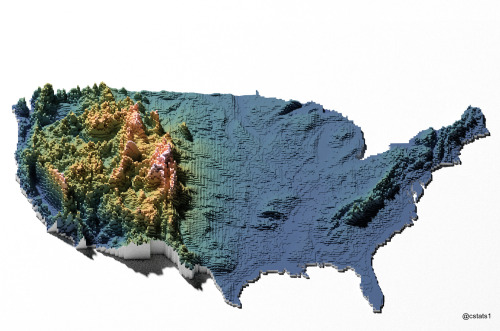
US Elevation.
by @cstats1
